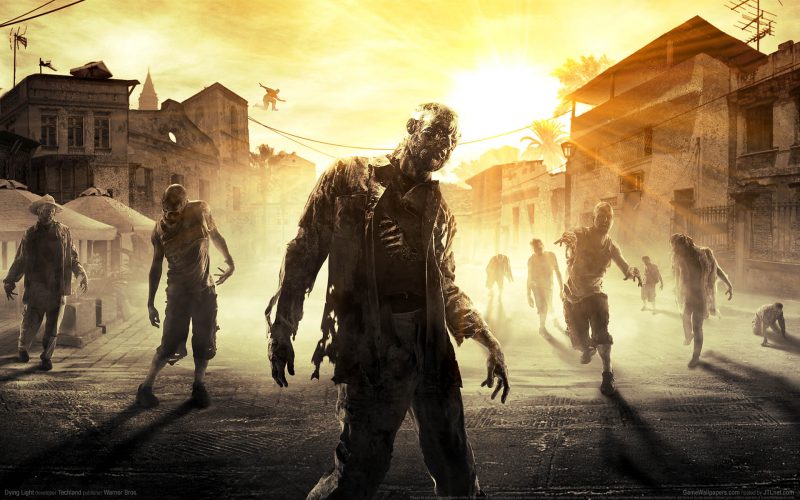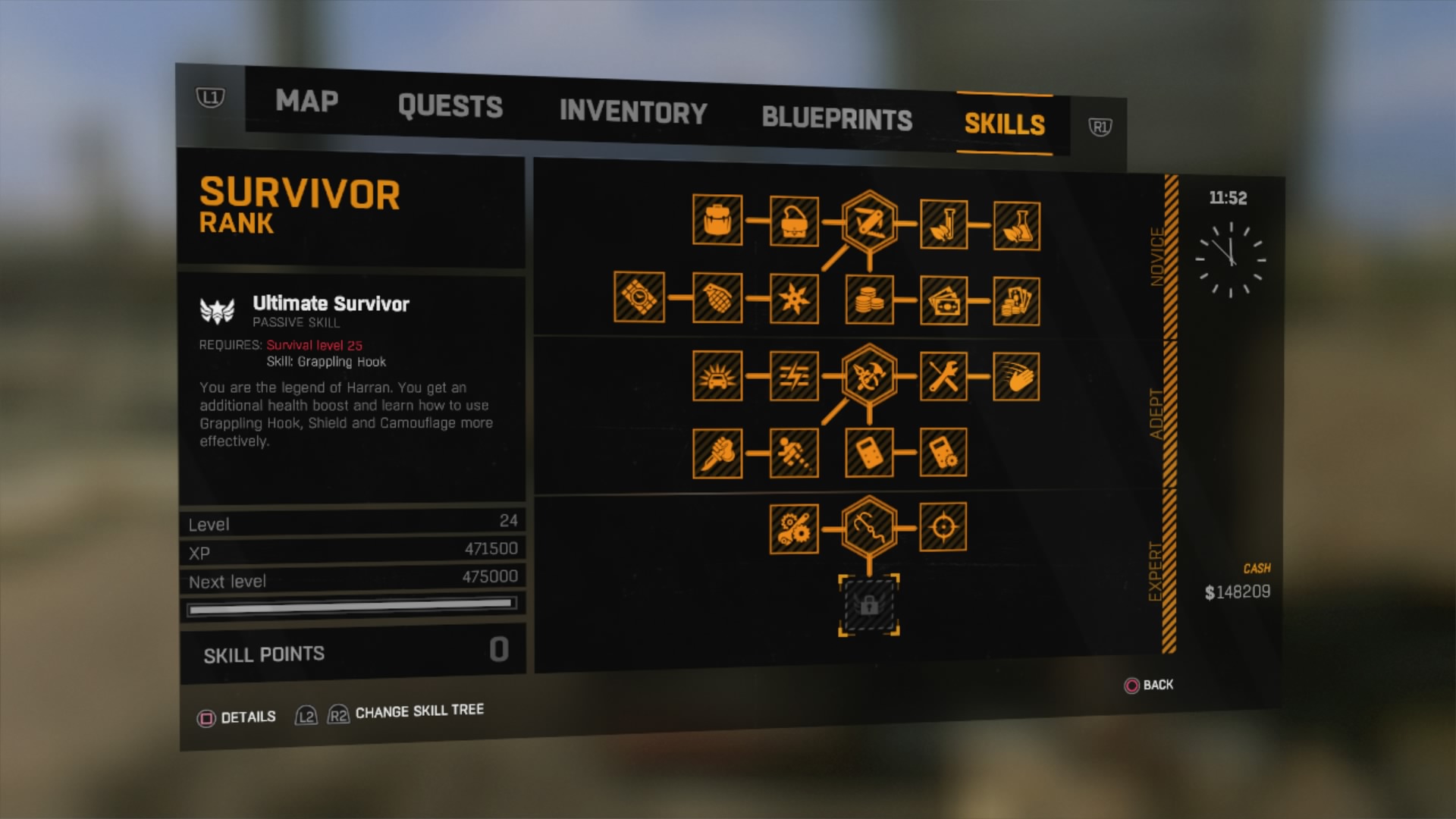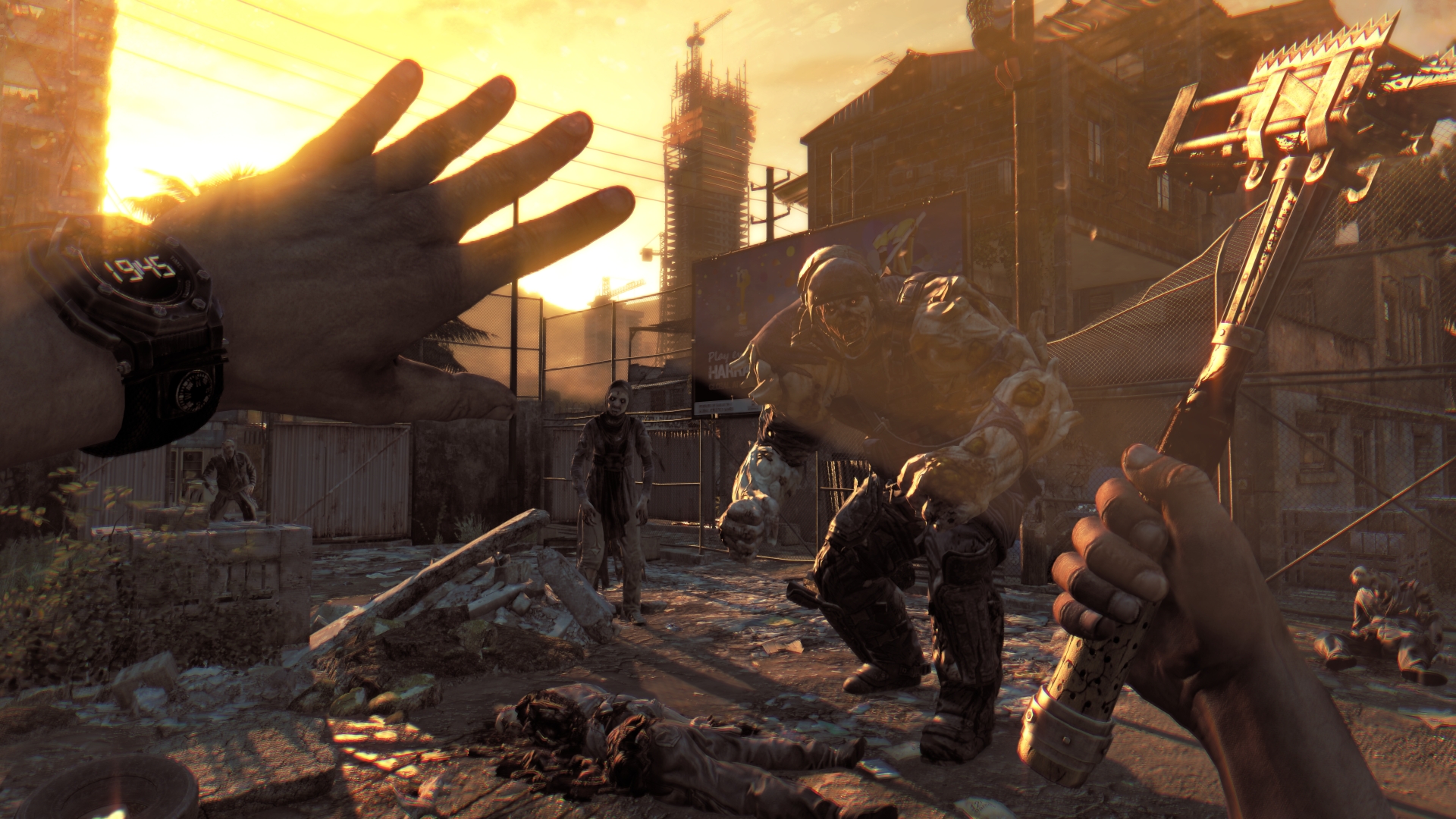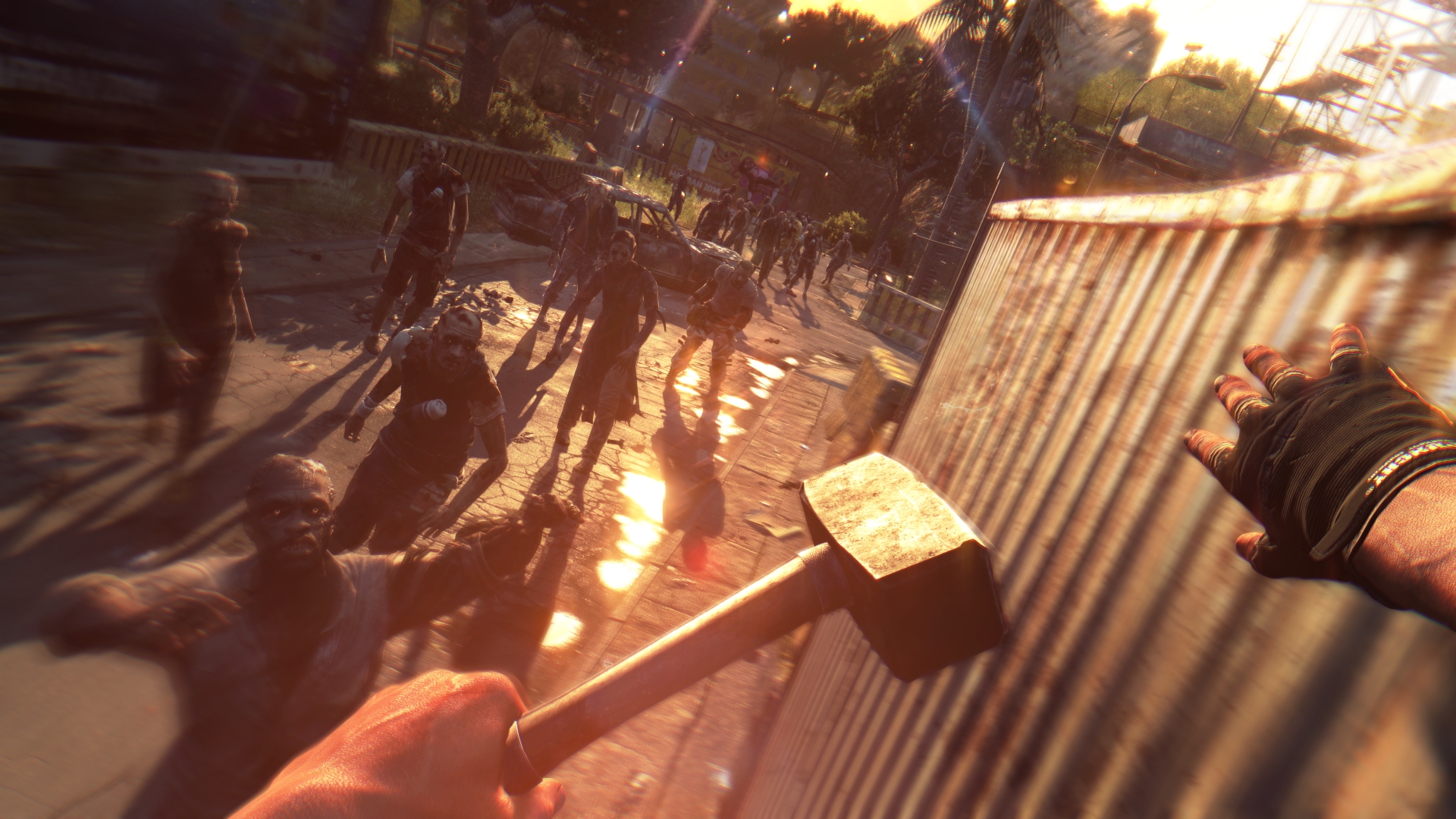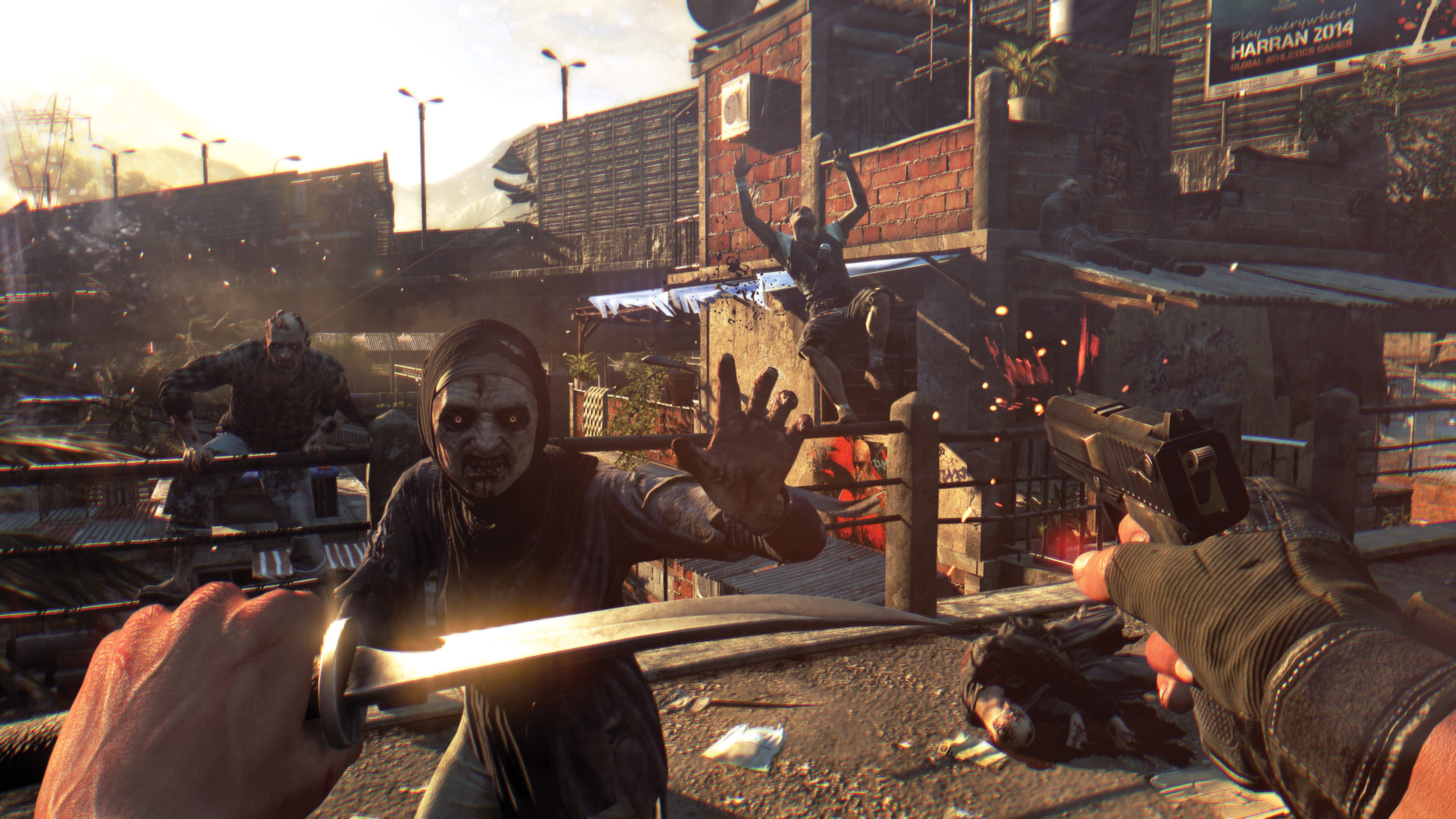Some people are of the opinion that zombie-themed games are completely played out at this point. I disagree, for one simple reason: Not all zombie games are the same.
Contrary to popular belief, there remains a surprising amount of diversity when it comes to this particular sub-genre. Dead Rising plays very differently from, say, The Last of Us. While DayZ and Left 4 Dead are both first-person shooters, that might be the only obvious parallel – both games are vastly dissimilar in just about every other way.
Dying Light, Techland’s latest offering and spiritual successor to their Dead Island series, is the latest addition to the fray. Does it bring anything new to the table?
Run Boy Run
One of the major selling points of Dying Light is that it throws parkour (or free-running) into the mix, and it does so from a first-person perspective – something that has proven rather tricky in the past. Aside from a tiny handful of titles that have gotten first-person acrobatics just right (Mirror’s Edge comes to mind), issues like the reduced field of view and lack of spatial awareness are generally touted as reasons for a first-person perspective being ill-suited for a platforming experience.
While I wouldn’t call the free-running mechanics in Dying Light perfect, they work pretty well. Protagonist Kyle Crane can run, climb, jump, slide and roll about the semi-fictional Middle-Eastern city of Harran with relative ease.
Maneuvering around Harran can seem rather slow and stilted at first, and the size of the city can be a little daunting, especially with the conspicuous lack of vehicles and a fast-travel function. The control scheme is well-designed, and all jumping and traversal functions have been streamlined to work without any finger-cramping button combinations.
Kyle starts off the game at a central hub simply called “The Tower”, which is a safe zone populated by merchants, storyline characters, and other quest-giving NPCs. It goes without saying that you probably shouldn’t stray too far from the Tower at the beginning, especially if you have yet to discover other safe zones. Things get easier further along after you’ve gotten a better feel of the parkour mechanics and have unlocked a couple of skills in the Agility tree.
Indeed, what zombie game will be complete without some kind of level-up mechanic? Aside from a “Survivor” rank that confers general bonuses such as increased health and inventory space, players can enhance their movement and combat abilities simply by putting them to use.
Landing a successful jump will confer Agility XP, and taking down zombies with your weapon of choice will grant experience towards your combat-focused Power tree. Given enough time, Kyle can become quite the powerhouse, able to shrug off regular zombie attacks almost instantaneously and demolish foes with relative ease.
Duct Tape and Baling Wire
Just like in most other survival games, inventory management and item crafting are major components of Dying Light. As Kyle roams about the streets of Harran, he will come across a multitude of items ranging from makeshift weapons and consumables, to crafting materials like spare parts, nails, scrap metal and the like.
Kyle can also find blueprints, which allows the player to combine these crafting materials into various useful items like health kits, bombs, weapon modifications, and so on. You would think that crafting materials would be scarce to reflect the dire situation in Harran, but strangely this is not the case.
After a few hours of play, I had amassed enough materials to craft dozens of health kits, among other things. On top of that, the game is a little too generous with the results of item crafting – imagine my surprise when I got not 1, but 5 (!) Molotovs when I put a single bottle of alcohol and some string together.
Considering that some of the crafted items are extremely useful (such as the aforementioned Molotov), this can really cheapen the experience as players could quite literally get through difficult areas through sheer attrition by spamming thrown weapons and health kits.
Weapon modifications are of course the highlight of the crafting system. With the right materials, Kyle can imbue his weapons with various effects, such as elemental damage (because come on, setting zombies on fire never gets old), reduced stamina consumption, and enhanced durability: the last of which is a highly prized attribute.
Weapons degrade after repeated use, and while they can be repaired, each instrument of death comes with a limited number of repairs before they are rendered completely useless for good. You definitely don’t want to get caught by a ravenous horde while all your weapons are broken or on the verge of breaking.
Good Night, Good… Luck?
Dying Light has a day/night cycle, and right from the beginning, players are led to believe that staying out in the open during the night is extremely hazardous. At first glance, this appears to be true – visibility is greatly reduced at night, and zombies become much more aggressive (aren’t they always?).
Volatiles, a superior breed of zombie, also spawn exclusively during the night, and these guys are faster and stronger than your average shambling undead – they can run, jump, and climb just like Kyle, and take (plus dish out) massive punishment before going down.
Getting caught by a Volatile during the early game is basically a guaranteed death, so players will want to avoid confrontation as much as possible. This adds an element of stealth to the game, and leads to some heart-pounding moments where you’re trying your best not to get spotted. The game’s minimap is rather helpful in this regard, as the Volatiles along with their field of vision are prominently displayed, allowing the player to plan his movements carefully.
However, once the shock of the first couple of nights has worn off, most players will start to realize just how exploitable the night cycle is. In an attempt to deter players from simply hiding through the night, Techland have doubled the Agility and Power XP gains after sundown, which can allow for some incredible character progression within a short time.
Once players have unlocked a couple of safe zones outside of the Tower, it is easy – too easy – to level up Kyle’s abilities by sticking close to the edge of a safe zone, then dipping into it whenever the action gets a little out of hand. The AI is utterly incapable of pursuing Kyle into a safe zone, even if he is standing just a few feet away in full view.
Combine that with the abundance of crafted throwing weapons, and nighttime is no longer something to be feared; rather, it becomes a prime hunting ground. I found myself deliberately advancing time in order to conduct most of my gameplay at night – it is simply more rewarding that way, and as long as you know what you’re doing, the risks are minimal.
The Only Easy Day… Is Every Day
This is really my main gripe with Dying Light. I’m no masochist, but I still like my games to offer up a decent challenge. Dying Light‘s difficulty curve completely falls off a cliff after the first few hours due to the balance issues that I’ve mentioned. Chucking firebombs at helpless zombies while they have no chance of ever getting to you might be fun, but it totally destroys that wonderful sense of tension that was set up so well during the game’s opening hours.
Even the free-running aspect, which is supposed to set Dying Light apart from all the other zombie games out there, is trivialized about midway through thanks to the introduction of a gravity-defying grappling hook. Sure, it gives the player an unprecedented level of freedom in exploration, but zipping around Harran like Spider-Man ensures nothing can ever catch up to you, and removes all elements of danger.
All of the above elements combined (over-abundance of supplies, exploitable AI/night cycle, grappling hook) make for what is fundamentally a broken game in terms of balance. The game is undoubtedly way too easy in it’s current form, and needs some serious adjustment to satisfy hardcore survival-horror aficionados.
Techland has teased a free update including a “Hard Mode” due sometime in March, but it remains to be seen if all of my concerns will be addressed. Given that they seem to have been listening to the community in the meantime, hopes are high that Hard Mode will deliver the challenge that a game like Dying Light deserves.
Sugar, Spice, and Everything Nice
It’s not all doom and gloom for Dying Light; I will readily admit that broken games can still be fun, and Dying Light is a perfect example of that. Cutting down zombies left and right, smashing heads in with a sledgehammer, and bounding from rooftop to rooftop are all activities that continue to feel immensely satisfying even after I’ve spent more than a dozen hours with the game.
Tearing through the undead hordes with an overpowered sword-wielding Kyle Crane is very cathartic – it’s almost as if the game wants you to exact bloody vengeance against the infected that gave you such a hard time during your first hour in Harran.
Combat feels clumsy at first (as it should be in a game like this), but as Kyle gets stronger and finds better weapons, becomes a much smoother and more responsive affair. Caving in a skull with a baseball bat or throwing an axe at a fleeing Bolter feels perfectly natural and intuitive.
But what about all the human drama, you ask. The story in Dying Light is serviceable and well-presented, but won’t win any awards – it checks off just about every “mankind are the real monsters” trope in the zombie apocalypse rulebook, and there are no unexpected twists to be found.
Key plot elements are usually presented to the player in the form of expositional conversations with NPCs and the occasional cutscene. While the writing isn’t particularly memorable, the delivery and voice acting are handled well, especially considering that most of the characters in Dying Light are not your usual Caucasian folk.
Speaking of which, I commend Techland for making a game set in the Middle-east, and populating it with a cast of racially-diverse characters that speak and act like regular people instead of caricatures – as regular as they could possibly be in a zombie outbreak scenario, anyway.
Aside from the chief antagonist, who looks to be an amalgamation of every memorable video game villain of the last 2-3 years, just about every survivor Kyle meets in Harran is believable – yes, even the nutcases (another zombie game staple).
The Final Verdict
In spite of its balance issues, Dying Light manages to hit most of the right notes, and delivers upon it’s promise of melding first-person free-running with zombie carnage. I can’t help but feel that this is one of those games that is somehow enhanced by how broken it is; while I would certainly welcome some tweaks to the difficulty, the game is still perfectly enjoyable in it’s current state.
Dying Light may not be high art, and will likely be forgotten in a few months, but I’ll be damned if it isn’t a thrilling ride while it lasts. Now if you’ll excuse me, I have some zombies to kill.
GEEK REVIEW SCORE
Summary
I’m tempted to label Dying Light as a “cheap thrill”, but that would be doing it a disservice. The story is paper-thin, though well-presented with good production values and moves things along quite nicely. It is an anomaly in the zombie survival sub-genre, in the sense that the protagonist is more empowered than endangered. In this particular case, it actually works. If zombie mayhem is your thing, give Dying Light a go.
Overall
7.4/10-
Gameplay - 8/10
8/10
-
Story - 6/10
6/10
-
Presentation - 8.4/10
8.4/10
-
Value - 7.2/10
7.2/10
User Review
( votes)Brian loves video games, gadgets, and comic books – in other words, all things geeky. Obsessed with lifting things up and putting them down repeatedly, he also loves ice cream, putting things together, and the occasional good book.

